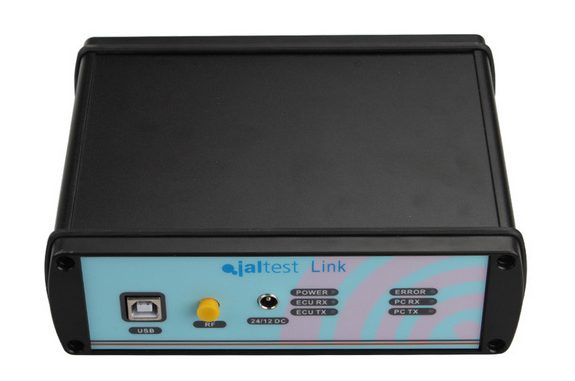
Efficient engine performance is crucial for machinery in various industries. Injector coding is a fundamental process that ensures optimal fuel delivery and combustion within the engine. In this blog post, we will delve into the significance of injector coding and how it contributes to proactive maintenance using Jaltest diagnostics.
Understanding the Basics of Injector Coding
Injector coding is the procedure of programming a diesel engine’s electronic control module (ECM) to acknowledge individual fuel injectors’ distinct attributes. These attributes encompass the flow rate, opening pressure, and spray pattern of each injector and are pivotal for ensuring optimal engine performance and effective emissions control.
Common Problems with Injector Coding
Improper injector coding can lead to severe issues such as misfires, uneven power delivery, poor fuel economy, and increased emissions. These problems can result in reduced machine productivity, costly downtime, and even engine damage. It is essential to address these issues promptly to prevent further complications.
Importance of Proper Injector Coding
Proper injector coding is critical for maintaining the engine’s efficiency and longevity. It directly impacts fuel consumption, power output, and emissions. By ensuring accurate injector coding, you can optimize the engine’s performance, minimize maintenance costs, and extend the lifespan of your machinery.
How to Code Injectors
Performing injector coding necessitates the utilization of a specialized diesel injector coding tool or diagnostic scan tool. While the steps involved may slightly vary based on the engine’s make, model, and the software or scan tool being used, the general procedure comprises the following:
1. Connect the injector coding tool to the ECM using the diagnostic port.
2. Input the vehicle identification number (VIN) and other pertinent information into the injector coding tool.
3. Follow the on-screen instructions to select the injector coding option and input the calibration data for each individual injector.
4. After calibrating all the injectors, disconnect the injector coding tool and start the engine to verify its proper functionality.
It is crucial to emphasize that injector coding should solely be undertaken by competent and well-trained technicians, as improper coding can result in severe engine damage. Therefore, always seek the guidance of certified professionals or rely on your diagnostic software or scanner, as the steps can differ depending on the engine and software used.
Tools and Equipment Needed for Injector Coding
To perform injector coding effectively, you require advanced diagnostic tools and software. Among the leading options available in the market, Jaltest Diagnostics stands out as a comprehensive solution. Designed specifically for commercial vehicles, Jaltest diagnostic software provides a wide range of capabilities, including injector coding, to simplify the maintenance process.
Jaltest and Injector Coding
Now that we have gained an understanding of the significance of injector coding and its functioning let’s dive deeper into how Jaltest’s diagnostic software empowers you to perform injector coding for your diesel engines.
Jaltest stands as a comprehensive diagnostic software suite offering technicians a wide array of capabilities for diagnostic and maintenance tasks related to diesel engines. Among its features is the ability to facilitate injector coding seamlessly. With Jaltest’s injector coding functionality, technicians can effortlessly calibrate fuel injectors, thereby ensuring optimal engine performance and efficient emissions control.
Jaltest’s injector coding feature begins by connecting the Jaltest diagnostic tool to the diagnostic port of the engine and selecting the injector coding option. Once initiated, technicians can input the required calibration data for each individual injector, while Jaltest’s software establishes communication with the engine’s electronic control module (ECM) to program the necessary adjustments.
One significant advantage of utilizing Jaltest for injector coding is its compatibility with an extensive range of diesel engines, including those from established manufacturers such as Cummins, Bobcat, Caterpillar, Volvo, Deutz, and many others. This comprehensive compatibility enables technicians to employ Jaltest for injector coding across various engine models and brands, minimizing the need for multiple tools and streamlining the diagnostic process.
Furthermore, Jaltest’s user-friendly interface adds to its appeal for injector coding. Technicians are guided through the coding process step-by-step, reducing the likelihood of data input errors and ensuring the execution of injector coding with utmost safety and accuracy.
In addition to injector coding, Jaltest offers a multitude of other diagnostic and maintenance features. These include fault code reading and clearing, component testing, parameter adjustment, and more. By leveraging Jaltest’s comprehensive toolkit, technicians can promptly and precisely diagnose and repair diesel engines, thereby minimizing downtime and enhancing overall fleet efficiency.
Conclusion: Emphasizing the Significance of Effective Injector Coding
In conclusion, injector coding plays a pivotal role in proactive maintenance, ensuring efficient engine performance and reducing downtime. By utilizing advanced diagnostic tools like Jaltest, businesses can streamline the injector coding process, enhance productivity, and prolong the lifespan of their machinery. Stay ahead of potential issues by prioritizing injector coding and harness the benefits of optimal engine performance.